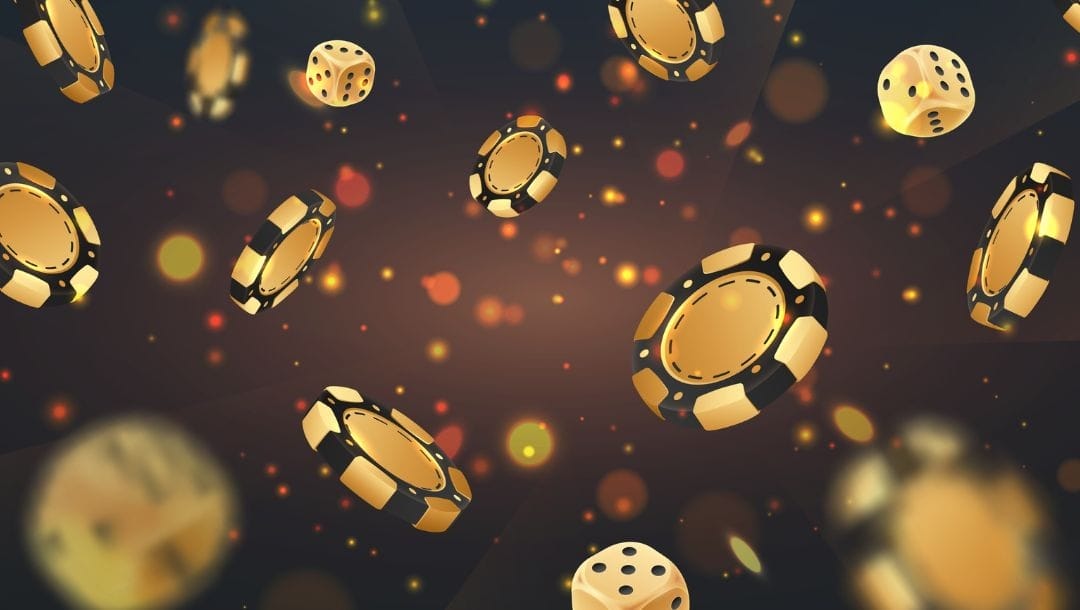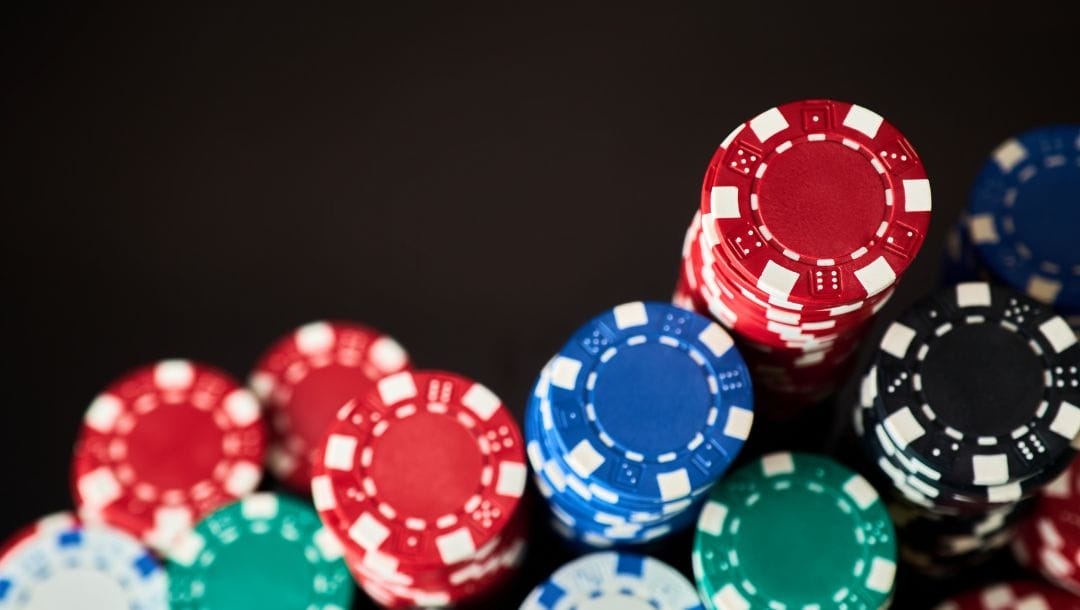Early poker players used ivory and wood to make chips. But those materials are long gone. Learn about the full history of poker chips.

Unless you’re exclusively an online poker player, you’ve probably handled a few chips in your time. Whether at a real casino or in a friendly home game, you’ll know how satisfying it feels to stack, shuffle, and toss chips into the pots.
However, the modern poker chips you see at casinos didn’t appear out of thin air. Where did these colorful coin-shaped tokens come from, and when did players start using chips in casino games? Read on to find out.
Chips of the Past
Poker chips have been almost perfected at this point. All kinds of designs, colors, and security features are used, but it wasn’t always like this.
Hundreds of years ago, you couldn’t exactly stroll down to the local Walmart and buy a set of poker chips. Online shopping wasn’t available either, so players had to use whatever was on hand. Gold nuggets, stones, gems, wood, and ivory worked well in simpler times, but gambling houses wanted to create a standardized betting token.
Since chips can be cashed in for real money, it didn’t take long for someone to make homemade copies. The simpler the token design, the easier it was to replicate, opening up the possibility of fraud. So, gambling houses desperately needed to make elaborate, secure, and high-quality poker chips.
How the First Real Poker Chips Were Made
It wasn’t until the 1880s that players got their hands on the first well-made poker chips. Casino companies found a way to compress clay into molds at extremely high pressure and temperatures, sometimes with a branded inlay.
Compared to what players were using in the previous centuries, these were very advanced. The chips gave players and game operators what they wanted, with one small downside.
Clay alone isn’t the most durable material, so it doesn’t hold up well to constant shuffling and tossing about. They didn’t have a lengthy lifespan when used for casino table games, so colors faded and chips cracked.
Poker chips became stronger in the 1950s thanks to some clever companies adding sand and other materials into their mix. The goal was a highly durable chip with distinct coloring and markings.
Producers have been improving how poker chips are made ever since, but they don’t sell them with an ingredients label. For each company, the manufacturing process and clay recipe are closely guarded secrets. The more they share, the more crafty counterfeiters know to make illegal copies.
The Modern Poker Chips Used in Casinos Today

Of all the different types of chips produced throughout history, ceramic and plastic have become the choice materials for casinos. The chips are formed by injection molding and contain resins, ABS plastics, and other ceramic-like materials. The finished product has a decent weight, smooth surface, and crisp lettering with no visible flaws.
Modern poker chips are standardized in every way, from the dimensions to the texture. They’re a form of currency for casinos, so the design must have a level of quality that the average person can’t replicate. This means that manufacturing standards are extremely high, just as they are for playing cards and dice.
Previous generations certainly weren’t using such well-crafted poker chips, but the forgers and fraudsters weren’t complaining. These days, you’d have to be a modern Michelangelo to counterfeit a casino’s poker chips. Even if you figured out exactly how to replicate the chips, you’d have to forge a ton of security features, too.
Security Features of Modern Poker Chips
Branding and marking poker chips wasn’t going to stop forgers forever, so security features kept improving. Most people probably have no idea about some of the tricks casinos are using these days to stop counterfeiting.
Consistency
One security feature of poker chips is their unfaltering consistency, which makes replicas easier to spot. Casino employees can tell real chips from fake ones based on the weight, size, and even the sounds they make. This is the first line of defense against forgeries.
Design
Color is vital, too, so casinos usually choose a unique palette for their chips. It’s not enough to have a colorful token though, as casinos have learned the hard way. Microdots, holograms, gradients, and serial numbers have all been used to thwart copycats. Some chips even use UV markings that only appear under a special black light.
RFID
If you play casino online games with real cards and dealers, you’ve probably noticed that values automatically show up on your screen. Instead of manually entering the information, the casinos use a technology called radio frequency identification (RFID). Some poker chips also use RFID, though it’s an expensive security feature. With it, casinos can monitor and verify the chips in their games.
Watch Out for Fake Chips

Card and chip security is always going to be a priority for land-based casinos, whereas online casino games only have to worry about digital security. You’ll never have to check for counterfeit chips in online poker tournaments, for instance. But it’s good to remain vigilant when playing at brick-and-mortar casinos.
If you ever receive chips from a friend or acquaintance that look a bit fishy, check with the casino staff before entering any games. Using fake chips could lead to a full ban from the casino or even criminal charges, and neither of those outcomes is much fun.
Always get your poker chips from the cashier of the casino you are playing at or the dealers at the tables. Treat the chips like real currency and avoid making trades with anyone not working for the casino.
To keep the action going at home, consider buying your own set of poker chips. Affordable sets go for less than $50, and larger ones with travel cases sell for around $100.
Ready To Start Playing?
Creating an online casino account is a lot easier than arranging a weekly poker night at home. For one, there’s no need to purchase a set of chips. But you’ll also have access to thousands of opponents, competing in cash games and tournaments at whatever stakes you’re comfortable with.
Any new players who register also earn a welcome bonus, which is an immediate boost for your bankroll. The site’s daily freerolls are another great way to win some cash. Good luck at the tables, whether you’re handling real poker chips or the online kind.


